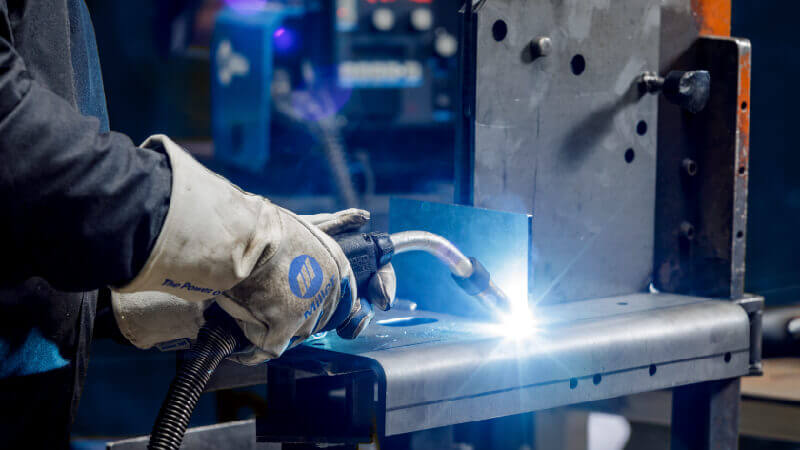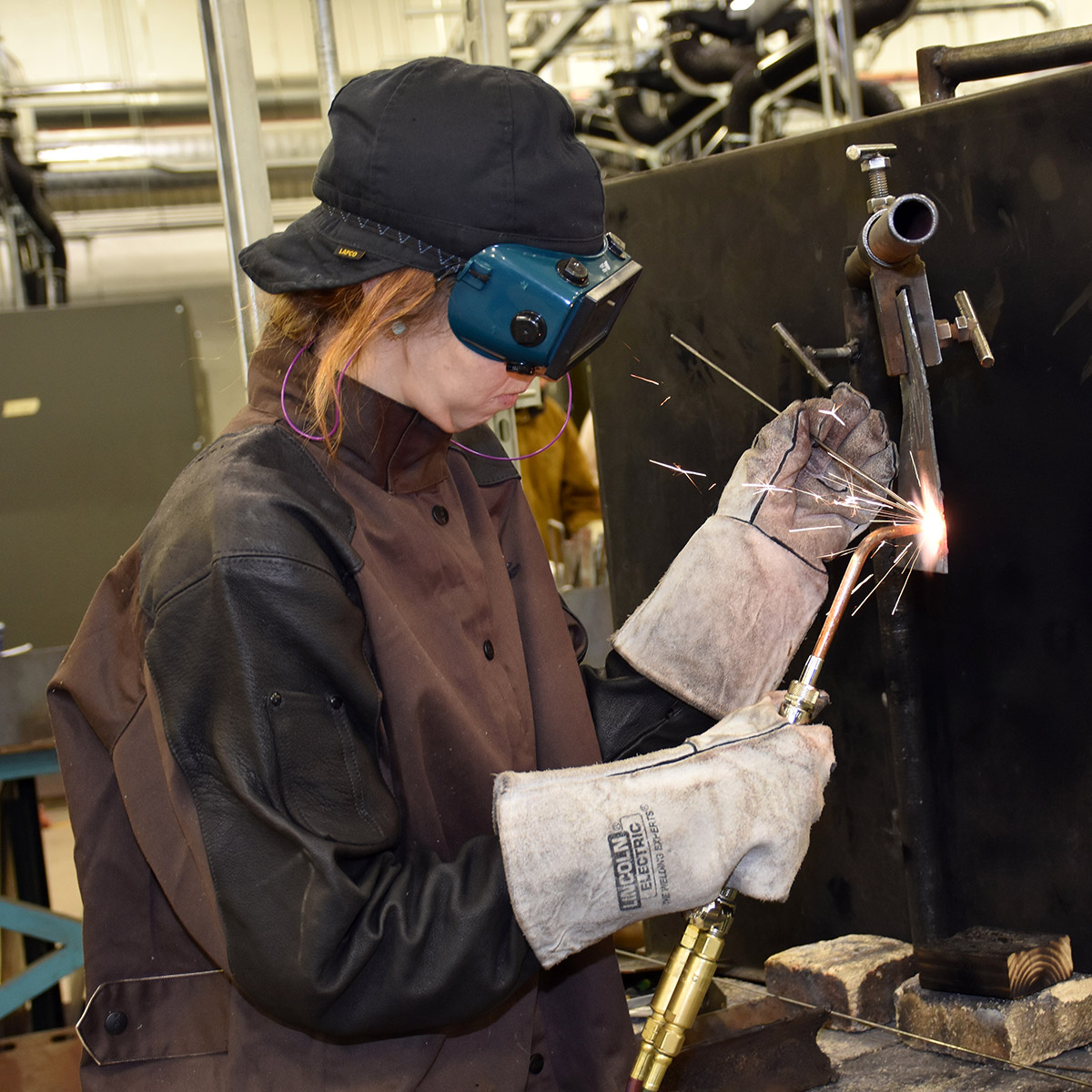Usual Welding Fixing Issues and How to Address Them Properly
Welding repairs typically run into a range of problems that can jeopardize the integrity of the end product. Usual issues include inadequate infiltration, porosity, and misalignment, among others. Each issue provides special difficulties that require details techniques for resolution. Comprehending these problems is important for welders intending to boost their outcomes and abilities. This conversation will certainly discover these common welding repair service concerns and efficient approaches to address them.
Poor Penetration
Poor infiltration happens when the weld metal stops working to completely fuse with the base material, leading to weak joints and potential architectural failures. This concern commonly comes from not enough heat input, inaccurate electrode angle, or incorrect welding speed. Welders may experience insufficient penetration as a result of a miscalculation of the required parameters for a certain material thickness or type. Additionally, contamination on the base material's surface area can prevent reliable bonding, aggravating the problem. To attend to inadequate infiltration, welders should assure ideal setups on their tools and preserve a clean job surface area. Normal examination of welds is advised to recognize any deficiencies early, enabling prompt corrections and the avoidance of endangered structural stability in bonded settings up.
Porosity
Porosity is a typical problem in bonded joints that materializes as tiny gas bubbles entraped within the weld metal. This issue can jeopardize the integrity of the weld, leading to decreased toughness and possible failing under tension. Montana Mobile Welding and Repair. Porosity typically occurs from contamination, dampness, or inappropriate welding methods, which allow gases to leave into the molten weld pool. To deal with porosity, welders ought to assure proper surface area preparation, keep a tidy functioning atmosphere, and make use of appropriate welding criteria. Furthermore, picking the best filler product and protecting gas can reduce gas entrapment. Normal inspection and testing of welds can help identify porosity early, ensuring prompt rehabilitative activities are taken, therefore preserving the quality and reliability of the welded framework
Misalignment
Imbalance in welding can occur from various elements, including improper configuration and thermal expansion. Understanding the origin is important for effective resolution. Numerous adjustment methods are readily available to realign components and assure architectural integrity.
Root causes of Imbalance
Welding imbalance commonly originates from a variety of underlying issues that can endanger architectural honesty. One main reason is inappropriate fit-up of parts prior to welding, which can lead to voids and irregular surface areas. Variations in thermal expansion during the welding process can also lead to distortion, particularly if the materials being signed up with have various coefficients of development. In addition, inadequate fixturing and clamping may fail to hold elements securely in location, resulting in motion throughout welding. Poorly conserved equipment, consisting of welding devices and tools, might present incongruities in the weld bead, further adding to imbalance. Operator mistake, stemming from not enough training or experience, can likewise play a substantial function in producing misaligned welds.

Adjustment Methods Available
Addressing misalignment successfully needs a combination of rehabilitative techniques customized to the specific problems available. One usual method is using jigs or components to hold parts in the proper placement throughout welding, making sure constant alignment. Additionally, pre-heating the products can help in reducing distortion and enhance fit-up. For significant imbalance, mechanical adjustment strategies, such as using hydraulic jacks or clamps, can be used to correct the position prior to welding. Post-weld warmth treatment may also be required to alleviate anxieties brought on by imbalance. Cautious assessment and change during the configuration phase can avoid misalignment concerns from becoming significant troubles, advertising a smoother welding procedure and boosting total architectural stability.
Distortion
Distortion is a typical difficulty in welding that can emerge from various aspects, consisting of unequal home heating and cooling. Comprehending the reasons for distortion is essential for applying efficient prevention techniques. Addressing this issue not just enhances architectural integrity yet additionally improves the general quality of the weld.
Reasons of Distortion
When subjected to the intense warm of welding, products commonly undertake changes that can bring about distortion. This sensation mainly arises from thermal expansion and contraction during the welding process. As the weld location warms up, the product broadens; upon cooling, it acquires, which can develop inner stress and anxieties. In addition, uneven home heating throughout a workpiece can worsen these tensions, leading to warping or flexing. The kind of product also plays a substantial role; metals with varying thermal conductivity and coefficients of growth may react in different ways, resulting in unforeseeable distortions. Moreover, inadequate joint layout and poor fixturing can add to misalignment during welding, raising the possibility of distortion. Understanding these reasons is necessary for effective welding fixing and avoidance approaches.
Avoidance Techniques
Effective avoidance strategies for distortion throughout welding concentrate on regulating warmth input and guaranteeing appropriate joint design. Keeping a regular heat input helps to minimize thermal development and contraction, which can lead to distortion. Utilizing techniques such as pre-heating the work surface can additionally lower the temperature level slope, promoting uniform heating. In addition, choosing proper joint designs, such as T-joints or lap joints, can boost security and decrease anxiety focus. Executing appropriate fixturing to safeguard the work surfaces in position additionally aids in keeping alignment during the welding process. Ultimately, staggered welding sequences can disperse warm a lot more evenly, avoiding localized distortion. By applying these approaches, welders can considerably lower the probability of distortion and enhance the total high quality of their welds.
Breaking
Breaking is a common issue come across in welding fixings, frequently arising from various factors such as inappropriate air conditioning rates, material option, or poor joint preparation. The event of splits can significantly jeopardize the integrity of the weld, leading to potential failings throughout operation. To resolve this issue, welders have to first analyze the origin, making certain that products work and properly chosen for the particular application. Furthermore, regulating the air conditioning price throughout the welding procedure is vital; rapid cooling can cause tension and cause fracturing. Correct joint layout and preparation also add to minimizing the risk. Implementing these methods can enhance weld quality and toughness, eventually decreasing the chance of cracking in finished weldments.

Incomplete Fusion
A significant concern in welding fixings is insufficient blend, which occurs when the weld metal does not sufficiently bond with the base product or previous weld passes - Belgrade Fabrication. This defect can result in weaknesses in the joint, potentially endangering the integrity of the bonded structure. Aspects adding to incomplete blend include insufficient warmth input, inappropriate welding method, and contamination of the surface areas being joined. To resolve this issue effectively, welders should ensure appropriate pre-weld cleansing and surface preparation, along with change their welding parameters to attain sufficient penetration and combination. Normal examination throughout the welding process can additionally help determine incomplete fusion early, enabling prompt corrective actions to improve the overall quality of the weld
Overheating
While welding fixings can improve structural honesty, overheating presents a significant challenge that can cause product degradation. Excessive warm during welding can modify the mechanical homes of metals, causing minimized toughness, boosted brittleness, and warping. This phenomenon is especially critical in high-stress applications where architectural reliability is paramount. Identifying getting too hot can include visual assessments for discoloration or distortion, along with keeping track of temperature during the welding procedure. To reduce the dangers related to overheating, welders must use appropriate methods, such as go now regulating warm input, changing traveling speed, and using suitable filler materials. In addition, carrying out pre- and post-weld warmth therapies can assist restore material properties and improve the overall quality of the repair service, ensuring long-term performance and safety and security.
Frequently Asked Concerns
What Are the Usual Signs of a Welding Flaw?

How Can I Check My Welds for High quality?
To check welds igbt inverter welder for high quality, one can utilize aesthetic inspections, ultrasonic testing, and radiographic techniques. Each technique ensures structural honesty, identifies flaws, and verifies adherence to specified requirements, eventually boosting the reliability of the welded joints.
What Security Preventative Measures Should I Take While Welding?
When welding, one should focus on security by putting on suitable individual safety tools, ensuring proper ventilation, securing combustible materials away, keeping a clean work space, and understanding surroundings to stop crashes and injuries.
Can I Fix a Weld Without Redoing the Entire Joint?
Fixing a weld without remodeling the whole joint is possible, depending upon the damage (Montana Mobile Welding and Repair Welding). Methods such as grinding, adding filler product, or using a welding procedure can effectively resolve details flaws while maintaining the surrounding structure
What Tools Are Necessary for Efficient Welding Repairs?
Necessary tools for effective welding repairs include a welding device, cord brush, grinder, safety gear, clamps, and filler materials. Each device plays a crucial function in making sure quality and safety throughout the repair work procedure. Porosity normally occurs from contamination, wetness, or incorrect welding strategies, which allow gases to get away right into the liquified weld pool. Poorly kept equipment, including welding machines and devices, may introduce incongruities in the weld grain, additional contributing to imbalance. When subjected to the extreme warmth of welding, materials usually go through changes that can lead to distortion. Fracturing is a typical problem encountered in welding repairs, often resulting from different factors such as improper cooling rates, product option, or inadequate joint preparation. A substantial problem in welding repair services is incomplete combination, which occurs when the find more weld metal does not sufficiently bond with the base material or previous weld passes.
Comments on “Major weld defects handled with care by Belgrade Welding experts”